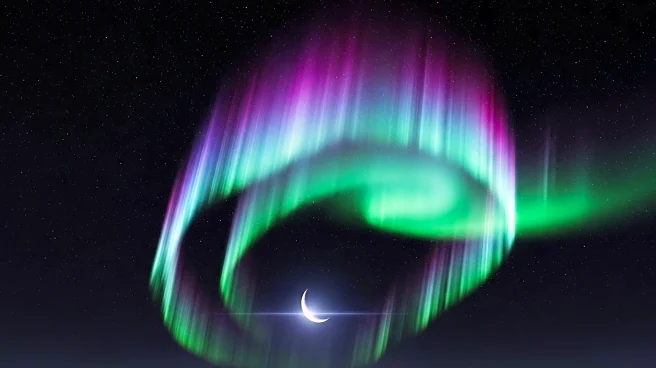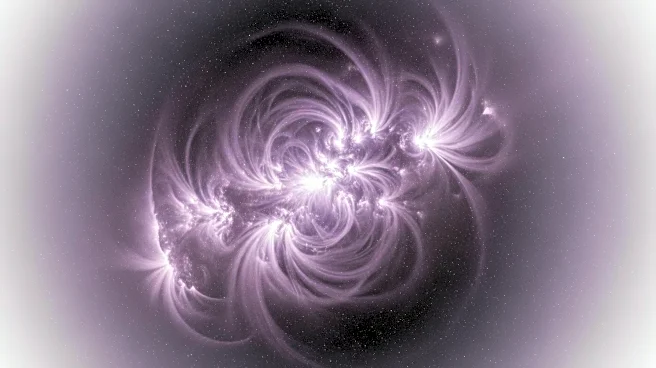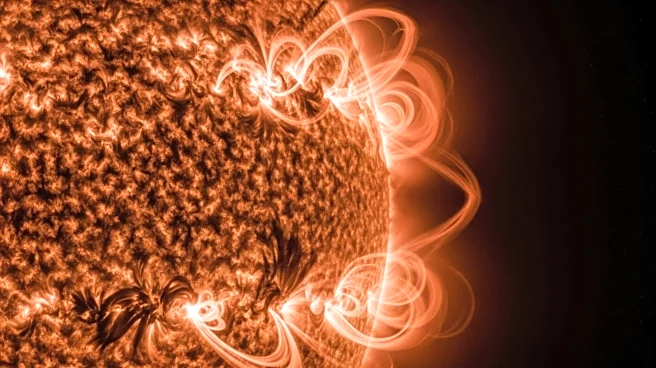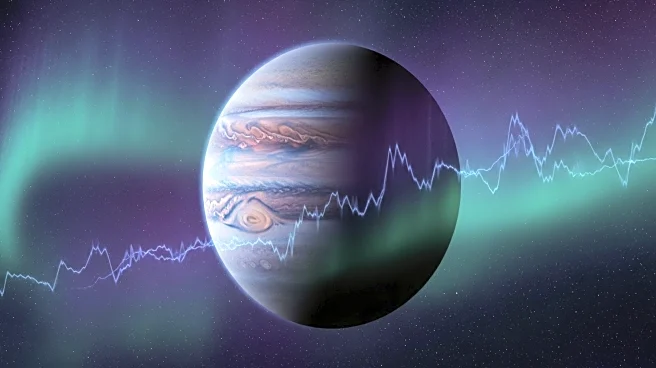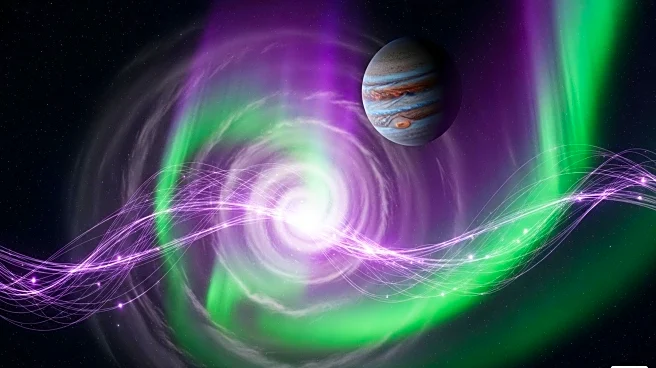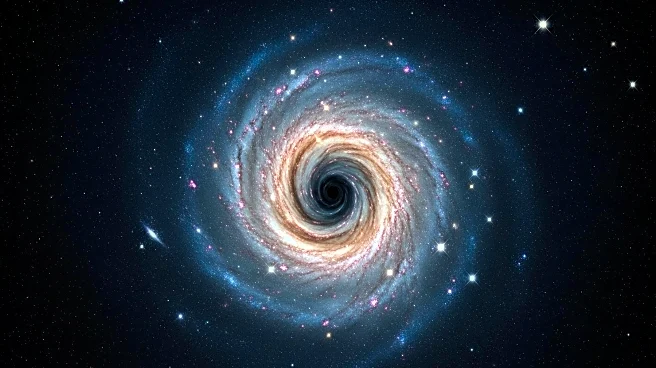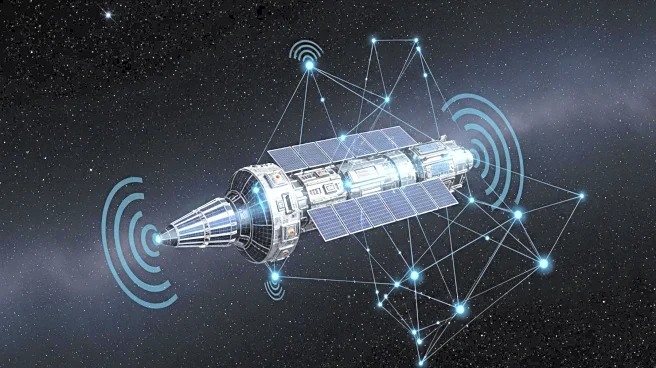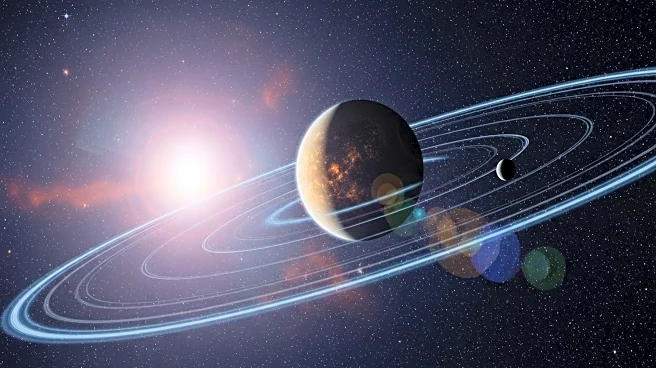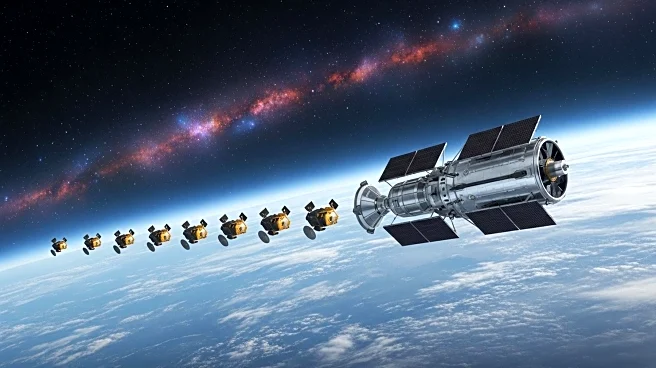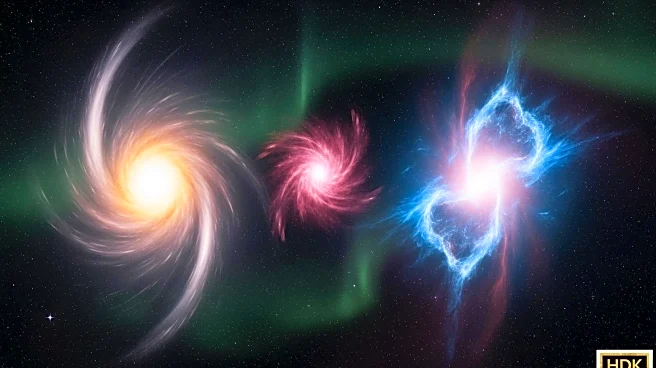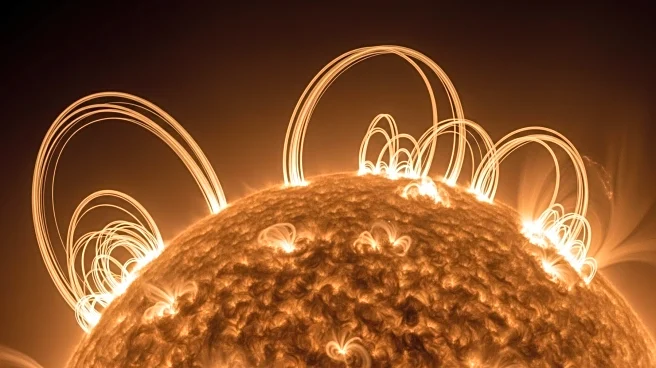What's Happening?
Recent solar activity has resulted in unusually bright auroras, visible in regions farther south than typical. Space weather physicist Tamitha Skov explains that the sun is currently at the peak of its solar cycle, leading to more frequent and intense geomagnetic storms. These storms cause the aurora borealis to appear more vividly, as charged particles from the sun interact with Earth's atmosphere. The increased visibility of auroras is partly due to advancements in technology, allowing for better detection and sharing of these phenomena.
Why It's Important?
The heightened solar activity has implications beyond the visual spectacle of auroras. It poses potential risks to satellites, power grids, and communication systems, which can be affected by geomagnetic storms. Understanding and predicting space weather is crucial for mitigating these risks and protecting infrastructure. The increased interest in auroras also reflects a growing awareness of space weather and its impact on daily life, highlighting the need for continued research and preparedness.
What's Next?
As the solar cycle continues, scientists anticipate more extreme geomagnetic storms, which could further affect technology and infrastructure. Efforts to improve space weather forecasting and develop protective measures for satellites and power grids are ongoing. Public interest in auroras may drive increased funding and support for space weather research. Additionally, the changing patterns of Earth's magnetic field could lead to new insights into planetary dynamics and climate.
Beyond the Headlines
The visibility of auroras serves as a reminder of the interconnectedness of space and Earth. It prompts consideration of the broader implications of solar activity, including its role in shaping Earth's climate and environment. The study of auroras and space weather contributes to our understanding of the universe and our place within it, encouraging exploration and innovation in science and technology.
